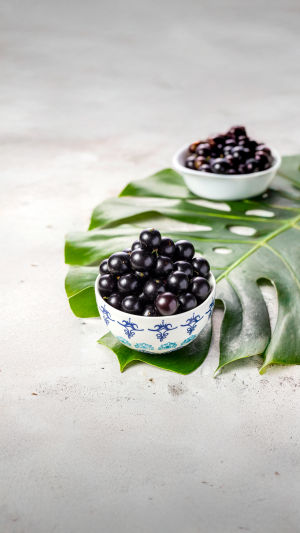You've probably enjoyed the usual suspects—apples, bananas, strawberries—but have you ever considered branching out to something more unusual?
There's a whole world of fruits out there, many of which are packed with unique flavors and surprising health benefits.
Let's take a look at some uncommon fruits that are worth trying, and you might just find your new favorite snack.
<h3>1. Rambutan: The Hairy Fruit</h3>
At first glance, rambutan looks like a strange creature from another planet. Its outer skin is covered with spiky hairs, but once you peel it away, you'll find a translucent, juicy fruit inside. The flavor is sweet and mildly tangy, making it a fun and refreshing snack.
Originating from Southeast Asia, rambutan is rich in vitamin C and antioxidants, which help boost immunity and fight off free radicals.
How to eat it: Simply peel off the outer shell, and enjoy the flesh that's similar to lychee, but a bit juicier. It's perfect for snacking or adding to fruit salads.
<h3>2. Jabuticaba: The Grape Tree</h3>
This fruit is often referred to as the "grape tree" because it grows directly on the trunk of the tree, making it look like a scene straight out of a fairy tale. Native to Brazil, jabuticaba has a dark purple skin with a tart, sweet flavor, somewhat like a grape but with a deeper richness. The flesh is slightly crunchy and juicy, making it a treat to bite into.
Jabuticaba is also known for its health benefits, as it's packed with vitamins and antioxidants. In Brazil, it's commonly used to make jellies.
How to eat it: You can enjoy jabuticaba fresh, or use it to make jams. It's also a great addition to desserts, like sorbets or tarts.
<h3>3. Mangosteen: The Queen of Fruits</h3>
Dubbed "the queen of fruits," mangosteen is a tropical fruit known for its sweet, fragrant, and slightly tangy flavor. The fruit's thick purple rind hides juicy, white segments that taste like a combination of peach, pineapple, and lychee.
Mangosteen is rich in fiber, vitamin C, and minerals, making it not only delicious but good for digestion and overall health.
How to eat it: Slice open the rind carefully, and inside you'll find the sweet white segments. It's like opening a treasure chest of flavor!
<h3>4. Durian: The Smelly Delight</h3>
Durian is known for its powerful smell, which is so strong that it's banned in some public places like hotels and subways in certain countries. While the scent is divisive—some people love it, and others can't stand it—those who are brave enough to try it often describe the taste as incredibly rich and custardy, with hints of almond and caramel.
The flesh is soft and creamy, making it a unique experience.
Durian is packed with nutrients, including vitamins C and B, potassium, and fiber. It's also a great energy booster.
How to eat it: While the smell can be off-putting to some, it's worth trying. Simply scoop out the soft, creamy flesh and enjoy it straight from the shell. You can also find it in desserts like ice cream and pastries.
<h3>5. Salak: The Snake Fruit</h3>
Salak, also known as "snake fruit" due to its reddish-brown scaly skin, looks intimidating at first, but don't let its appearance fool you. Once peeled, the fruit reveals crunchy, segmented flesh that's sweet with a hint of tanginess. The taste is often described as a mix of apple, banana, and pineapple.
Native to Southeast Asia, salak is not only delicious but also packed with fiber and antioxidants that promote healthy digestion and help keep your skin glowing.
How to eat it: Peel off the skin and enjoy the crunchy flesh. It's perfect for snacking or adding to fruit salads.
<h3>6. Buddha's Hand: The Fragrant Fruit</h3>
Buddha's hand is one of the most visually striking fruits you'll ever encounter. Shaped like multiple yellow fingers extending from a central base, it's often used for its powerful lemony fragrance rather than for eating directly. The fruit has a zestful, aromatic rind, but little to no pulp.
While you can't really eat the fruit on its own, you can use the peel to infuse flavor into drinks, desserts, or even to make homemade cleaning products due to its fresh scent.
How to use it: Grate the rind into tea, use it to flavor a dish, or simply place it in your home to freshen the air. It's a fragrant and versatile fruit!
<h3>7. Chayote: The Edible Gourd</h3>
Chayote is a type of squash that's often mistaken for a pear due to its green, wrinkled appearance. Commonly used in Latin American and Caribbean cuisine, chayote is low in calories and high in fiber. It has a mild, slightly sweet flavor and a crisp texture, making it perfect for salads, stir-fries, or even eaten raw.
How to eat it: You can cook chayote in a variety of ways—sautéed, roasted, or boiled. It can also be eaten raw, making it a great addition to salads for extra crunch.
<h3>Exploring Uncommon Fruits for New Flavors</h3>
Trying new fruits isn't just about expanding your palate—it's also a fun way to experience different cultures and explore the diverse flavors nature has to offer. Whether you're craving something sweet, tangy, or aromatic, there's an uncommon fruit out there for you. From the creamy durian to the crispy chayote, these fruits not only provide unique tastes but are also packed with nutrients.
So, next time you're at the grocery store, don't just stick to the usual fruits. Pick up something new and start exploring the wonderful world of uncommon fruits. You never know—you might just find a new favorite!





